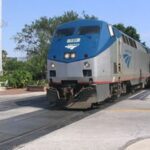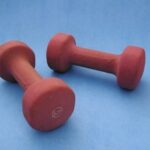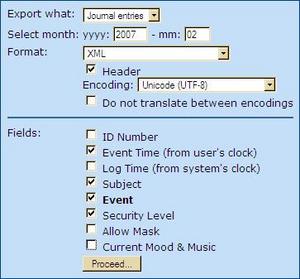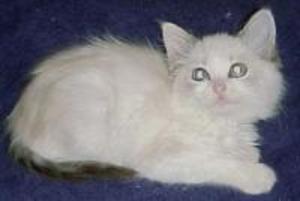Model railroading is continually gaining popularity as a hobby. More and more freight cars are leaving store shelves and thousands of new models are being produced in plastic for the first time. However, the vast majority of model railroaders model freight trains-few model passenger trains, and even fewer model modern Amtrak trains. There are a wide variety of reasons for this trend-passenger cars cost more and often require gentler curves. However, modeling Amtrak can be very rewarding, and gives your layout a unique flair. Because of their low popularity, Amtrak models can often be harder to find; they must usually be ordered online, directly from the manufacturer. In this article, I’ll attempt to help make Amtrak modeling a more accessible hobby for the inexperienced model railroader or anyone else not well versed in Amtrak basics.
1. Decide on a location or area to model. Amtrak serves a huge variety of places, from the bustling railroad metropolis of Chicago to the vast desert of Arizona. It is best to choose a town that will fit your layout size-it is almost impossible to model New York City accurately on a small four by eight layout. You may also want to consider the trains which serve your given location, and if their equipment suits your tastes.
2. Decide on a specific train or trains, which will be featured on your layout. Amtrak trains range from long bi-level Superliner consists to two car Horizon consists akin to commuter trains. On the electrified Northeast Corridor, conventional trains are pulled by an AEM-7 or HHP-8 electric locomotive. Regionals, Keystones, and other short distance routes in the eastern part of the country generally use Amfleet I coaches, cafes, and business class cars, where applicable. Acela Express trains on the NEC use high speed electric trainsets, which are made up of unique cafes, business class cars, and a first class car. Outside of the NEC, most Amtrak trains are pulled by P-42DC diesel locomotives, with the exception of state sponsored services on the west coast, which run with F59PHI’s and B-32BWH’s. Eastern long distance trains use single level Viewliner sleepers and Amfleet II equipment, along with some Heritage cars. Short distance routes serving Chicago use Horizon equipment, which is a modified version of a popular commuter railcar. Western long distance trains use bi-level Superliner consists, which include sleepers, diners, lounges, and coaches. In California, state sponsored services use special bi-level coaches, and equivalent services in the northwest use Spanish-built Talgo trainsets. Keep in mind that not all types of equipment will be availableas inexpensive plastic models-see the next section for more information. Generally, short distance routes have shorter trains, making them suitable for small layouts.
3. Obtain information about your train’s specific consist. To help you, I’ve included a basic rundown of some general consists. (It is fine to shorten these consists to your liking-very few modelers have a single “full” train running on their layout.)
Regional/Keystone (Northeast Corridor)
AEM-7 or HHP-8 electric locomotive
Amfleet I business class car*
Amfleet I café*
3+ Amfleet I coaches
*Regional only.
Crescent, Silver Star/Meteor, and Lake Shore Limited
AEM-7 or HHP-8 (New York-Washington, not on Lake Shore Limited)
P-32AC-DM Dual Mode locomotive (New York-Albany, Lake Shore Limited)
2 P-42DCs (along the rest of the route)
Heritage Baggage Car
2-3 Viewliner sleepers
Heritage Diner
Amfleet II Lounge
4-5 Amfleet II Coaches
Chicago area short distance train
P-42DC
Amfleet I or Horizon Club-Dinette*
2+ Horizon coaches
*only if café service offered
Western long distance train
2 P-42DC’s
Heritage Baggage Car
Superliner Transition sleeper
1-2 Superlienr Sleepers
Superliner Diner
Superliner Sightseer Lounge
2-4 Superliner coaches
Because models of west coast short distance trains are not widely available, I will not include consists.
4. Buy the models! Models are best ordered online; ebay often offers them at much lower prices used or new. If the manufacturer does not sell directly to the public, you can use Google’s Froogle shopping search engine for relatively comprehensive results. Unless you live near a very large hobby shop, ordering online is your best bet to finding the right models. Walthers, at www.walthers.com, offers Viewliners, Amfleet I’s and II’s, Superliners, Horizon, and Heritage passenger cars. Bachmann also offers Amfleet I’s, albeit at a higher price for essentially the same quality of model. The Acela Express trainset and HHP-8 locomotive are available from Bachmann exclusively. Athearn offers the P-42DC in a variety of road numbers-this model is also sold by Walthers. Overland Brass offers California Cars, used on corridor trains in the namesake state; however, these models are very expensive as they are made of brass and are hard to find. Walthers sells an older version of the Talgo trainset painted in the former Talgo paint scheme; sadly, decals for the new Cascades scheme are not available. Microscale and a variety of other companies do offer decals for most Amtrak paint schemes.
Whether you have never considered model railroading as a hobby before or are a seasoned expert in the field, it is now the perfect time to jump into the hobby of passenger modeling. On the web, you’ll find a wealth of information about other layouts, manufacturers, and layout construction and design tips. It is the perfect hobby for anyone, from railfans to those who simply enjoy building a work of art.





